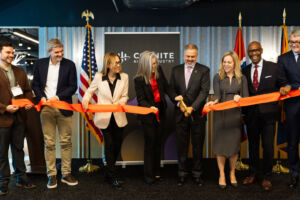On Thursday, January 13, 2022, the U.S. Supreme Court issued decisions in two closely-watched vaccine mandate cases.
In Biden v. Missouri, the Court lifted a stay of the federal government’s vaccine requirement as a condition of health care facilities’ participation in Medicare and Medicaid programs. This ruling has the effect of mandating COVID-19 vaccines for the majority of U.S. health care workers – approximately 10.4 million workers at 76,000 health care facilities and home health care providers. Medical and religious exemptions will be allowed.
In November 2021, the Secretary of Health and Human Services (“HHS”) issued an interim final rule requiring healthcare facilities that participate in Medicare and Medicaid to require their staff to be vaccinated. Two groups of states, one led by Louisiana and the other led by Missouri, challenged the rule and were successful in getting two district courts to enjoin it.
READ ALSO: Omicron variant: Here’s what you need to know
With its January 13 ruling, the Supreme Court (5-4 vote) lifted the stay of the HHS Secretary’s interim final rule, allowing the health care worker vaccine mandate to move forward in all 50 states.

The Court considered whether the vaccine mandate for healthcare workers fell within the authority Congress granted to HHS. The Court found that, yes, Congress authorized the HHS Secretary to impose conditions on the receipt of Medicare and Medicaid funds that the “Secretary finds necessary in the interest of health and safety of individuals who are furnished services.” Recognizing the highly contagious nature of COVID-19 and its dangers for Medicare and Medicaid patients, the Court found that the mandate fit “neatly within” the statute’s language. The Court further acknowledged that health care facilities wanting to participate in Medicare and Medicaid have always been obligated to satisfy a number of conditions relating to health and safety. The vaccine mandate, opined the Court, is a similar condition, particularly in light of the large scale of infection problems presented by COVID-19.
The Court further considered whether the rule was arbitrary and capricious and decided it was not. The Court concluded, based upon the rule-making record, that the HHS Secretary did, in fact, examine the relevant data and articulated a satisfactory explanation for the mandate.
In the second decision, Nat’l Federation of Businesses v. Dept. of Labor, the Court stayed enforcement of the Occupational Safety and Health Administration (“OSHA”) rule requiring vaccinations or testing for workers at facilities with more than 100 employees. The Court found that the Biden Administration overstepped its authority by seeking to enforce the OSHA rule.
The OSHA vaccine or testing mandate is an emergency temporary standard (“ETS”) issued by the Secretary of Labor. When the ETS was challenged by some states, businesses, and nonprofit organizations, one circuit appellate court stayed the mandate while another circuit appellate court set aside the stay – thus, sending the case to the U.S. Supreme Court for a ruling.
In its 6-3 ruling, the Court found that the ETS challengers were likely to succeed on the merits of their claim that the Labor Secretary lacked authority under OSHA to impose the mandate. The Court focused on the “significant encroachment into the lives – and health – of a vast number of employees.” Administrative agencies like OSHA possess only the authority that Congress provides them. The Court expects “Congress to speak clearly when authorizing an agency to exercise powers of vast economic and political significance.” The Court found that the Occupational Health and Safety Act (the “Act”) does not “plainly” authorize OSHA’s vaccine mandate here.
According to the Court, the Act empowers the Labor Secretary to “set workplace safety standards, not broad public health measures.” The Court disagreed that COVID-19 is a “work-related danger” or “occupational hazard,” which OSHA has authority to control, as opposed to an infection that “can and does spread at home, in schools, during sporting events, and everywhere else that people gather.” Accordingly, the Court opined that COVID-19 is more like “day-to-day dangers that all face from crime, air pollution or any number of communicable diseases,” not the type of workplace hazards that OSHA is authorized to address.
The Court did recognize, however, that OSHA does have authority to regulate occupation-specific risks related to COVID-19 and, where the virus poses a special danger because of the particular features of an employee’s job or workplace, targeted regulations are permissible. But, the Court found that allowing the broad vaccine or testing mandate at issue would significantly expand OSHA’s regulatory authority without clear congressional authorization.
What is next? The Court’s decision does not fully resolve whether the OSHA mandate can ever go into place. The case will go back down to the circuit appellate court for proceedings on the merits and further appeal to the Supreme Court is expected after the merits are decided. OSHA may also devise a more narrowly tailored emergency rule for a specific set of higher-risk companies (rather than all large employers). States, cities, and private employers may also continue enforcing their own vaccine or testing requirements in the absence of a single, federal rule which would have preempted such efforts. Stay tuned for more developments as the legal battles over vaccine mandates continue.
Attorney Andrea Marconi serves as Vice-Chair, Business Litigation at Fennemore. Her areas of practice include business litigation, health care and real estate.



